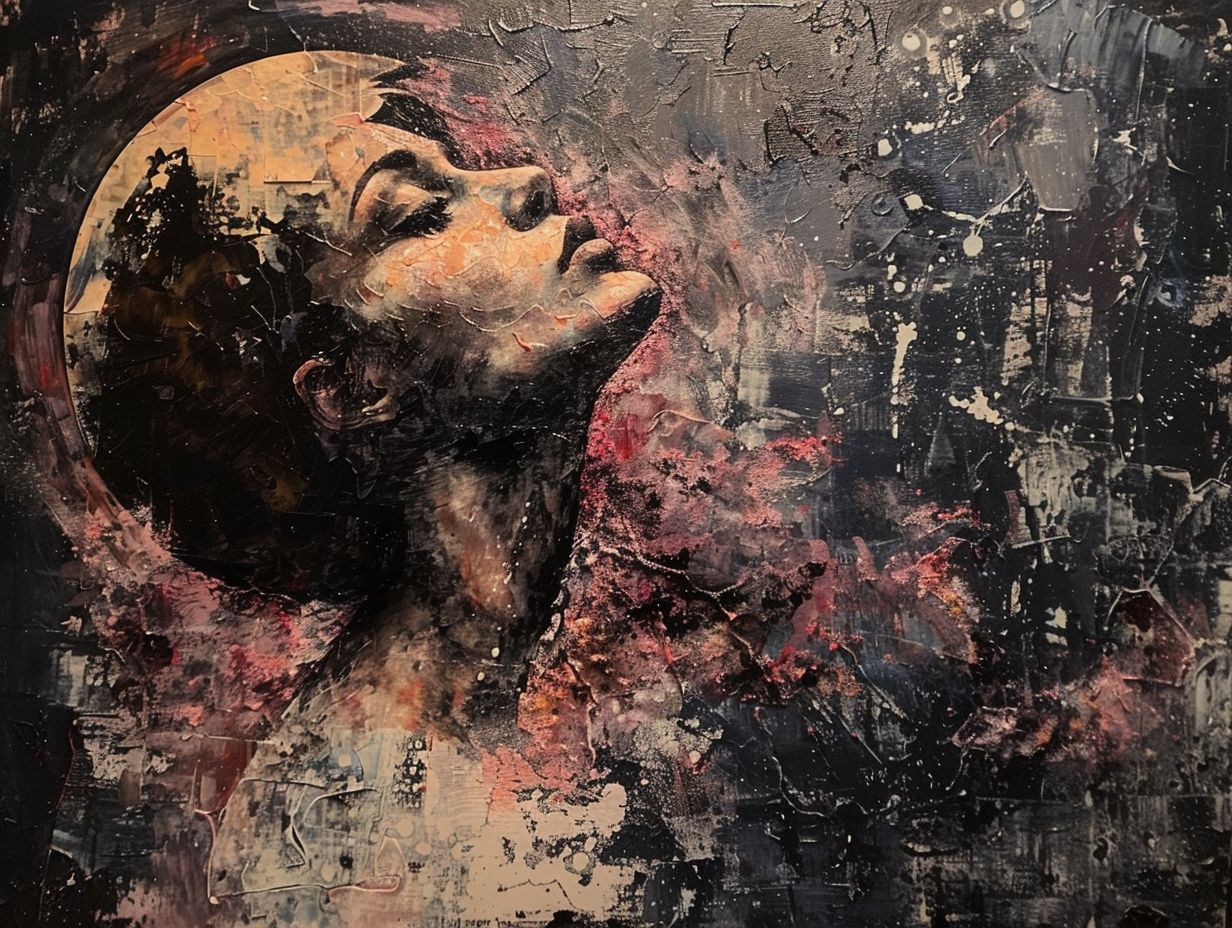If you find yourself facing a cold radiator in your living room and are unsure of the cause, this article is here to provide you with insight into the workings of radiators. It will delve into potential reasons for a cold radiator, including issues like trapped air, blocked pipes, or a faulty thermostat, and offer guidance on troubleshooting and resolving the problem.
Covering essential tasks such as bleeding the radiator and inspecting for leaks, this article aims to equip you with all the necessary knowledge. Additionally, you will gain insights into maintenance practices and preventative measures to avoid future cold radiator issues.
Key Takeaways:

- A cold living room radiator may be caused by trapped air, blocked pipes, or a malfunctioning thermostat.
- Troubleshoot the issue by bleeding the radiator, checking for leaks, or adjusting the thermostat.
- Prevent future problems by properly maintaining the radiator and considering an upgrade to a more efficient system.
Possible Causes of a Cold Radiator
Encountering a cold radiator may indicate various underlying issues within your heating system. The lack of sufficient heat could be attributed to problems such as trapped air, blocked pipes, or malfunctioning components.
Inadequate airflow is another common reason for cold radiators, often caused by obstructions in the vents or air intake. Problems with water flow, like a blockage in the system or a faulty pump, can lead to uneven heat distribution. Regularly inspecting and maintaining your heating system is essential to prevent these issues.
At times, a cold radiator could be a sign of a more serious problem, such as a faulty thermostat or a malfunctioning boiler. In such cases, professional intervention may be necessary for repair or replacement.
Air Trapped in the System
One of the main reasons for a cold radiator in your heating system is the presence of air pockets. Air trapped within the system can hinder the proper flow of water and obstruct the efficient distribution of heat across the radiator.
When air becomes trapped in the radiator, it creates bubbles that rise to the top of the system, reducing the overall heat output. This inefficiency not only leads to uneven heating within the room but also affects the energy consumption of the heating system as a whole.
To deal with issues related to air accumulation, you can bleed the radiators using a radiator bleed key to release the trapped air. Regularly inspecting and bleeding the radiators can enhance the system’s performance and ensure that your heating system operates at its optimum capacity.
It is essential to maintain proper ventilation within the heating system to prevent the accumulation of air and ensure consistent warmth throughout your space.
Blocked or Damaged Pipes

Blocked or damaged pipes can impede the flow of hot water to your radiator, resulting in reduced heating efficiency. It is essential for you to inspect and address any obstructions or leaks in the pipes to ensure optimal radiator performance.
When your pipes are blocked, your heating system has to work harder to push hot water through, leading to increased energy consumption and potentially higher utility bills. Clogged pipes can cause uneven heating in different parts of your house, creating discomfort for occupants.
You can detect pipe issues by observing leaks, listening for unusual sounds like gurgling, or feeling for temperature variations along the pipes.
Regular maintenance, such as flushing the system, checking for corrosion, and replacing worn pipes, is crucial for you to prevent costly repairs and maintain a reliable heating system.
Malfunctioning Thermostat
A malfunctioning thermostat, such as faulty thermostatic radiator valves (TRVs), can result in irregular heating patterns and cold radiators. Diagnosing and resolving thermostat issues is essential for maintaining a comfortable and consistent heating environment.
Thermostats play a crucial role in regulating the temperature of radiators by overseeing the flow of hot water through the system. When TRVs encounter problems like being stuck in one position or failing to open and close properly, it disrupts the equilibrium of heat distribution in the heating system.
Common issues with thermostatic radiator valves also include airlocks, leaks, or the accumulation of debris that hampers their functionality.
To pinpoint these problems, you can inspect for radiator cold spots, listen for unusual sounds, and observe any leaking fluids. Swiftly addressing thermostat malfunctions involves bleeding radiators, cleaning or replacing TRVs, and ensuring proper calibration for efficient heating.
How to Troubleshoot and Fix the Issue
Troubleshooting and fixing a cold radiator involves a systematic approach to identify and address the underlying issues affecting its performance. Begin by bleeding the radiator and checking for leaks, as various steps can help restore optimal heating.
It is crucial to ensure proper airflow around the radiator to maintain its efficiency.
Further assist in pinpointing the root cause of the problem by checking the thermostat settings and the functionality of the heating system.
Inspect the radiator valves for any blockages or malfunctions that may be obstructing the flow of hot water.
Engaging in regular maintenance, such as cleaning the radiator surface and ensuring proper insulation, can prevent future issues and prolong the life of the heating system.
Bleeding the Radiator
Releasing trapped air from a radiator, also known as bleeding, is a necessary procedure to improve water flow and restore proper heat distribution in the system. This step is particularly vital for radiators affected by trapped air, which can lead to heating problems.
When air becomes trapped within a radiator, it creates pockets that impede the smooth circulation of hot water, resulting in reduced heating system efficiency. Bleeding the radiator addresses this issue by allowing the trapped air to escape, facilitating unobstructed water flow.
The presence of trapped air not only disrupts the heating process but also causes the radiator to be colder at the top than at the bottom. By releasing this air, you can eliminate cold spots and ensure that heat is evenly distributed throughout the radiator. This optimisation enhances the radiator’s performance and energy efficiency.
Checking for Leaks or Damage
Inspecting radiators for leaks or damage is crucial in addressing heating problems. Identifying and promptly repairing any leaks can prevent water wastage and help maintain the integrity of your heating system.
Leak detection is crucial for radiator maintenance as leaks can lead to a loss of heating efficiency and potential damage to your entire heating system.
To check for leaks, carefully inspect all visible parts of your radiator, including valves, connections, and any visible pipes. Look for signs of moisture, rust, or discoloration around these areas as they may indicate a leak. It is essential to address any identified leaks promptly to prevent further issues and ensure the efficient operation of your radiator.
Adjusting the Thermostat

Fine-tuning the thermostat settings, specifically the thermostatic radiator valves (TRVs), can assist in regulating the temperature and enhancing heating performance. Ensuring the proper calibration of the thermostat is crucial for maintaining a comfortable indoor environment.
By adjusting the TRVs, you are able to manage the heat output in individual rooms. This targeted approach guarantees that rooms are kept at an optimal temperature, resulting in energy conservation. The calibration of the TRVs involves setting them to the appropriate level based on the specific requirements of each room.
Additionally, it is important to programme your thermostat according to your daily routine to minimise energy wastage during periods when heating is unnecessary, such as when you are asleep or away. Incorporating these modifications can lead to improved heating efficiency and reduced energy expenditures.
Preventing Future Cold Radiator Problems
Preventative maintenance is crucial for avoiding potential cold radiator issues and ensuring the longevity of your heating system. By adhering to certain fundamental tips and practices, you can maintain the efficient operation of your radiators.
- Regularly bleeding your radiators is key to releasing trapped air, which can lead to cold spots and decreased heating efficiency.
- Conducting routine checks for any leaks and promptly addressing them can help prevent water loss and uphold optimal heating performance.
- Additionally, scheduling professional maintenance at least once a year to thoroughly inspect the entire heating system is essential to verify that all components are in proper working order.
By taking these proactive measures, you can not only prevent cold radiator problems but also promote a more comfortable and energy-efficient home environment.
Maintenance Tips
Regular cleaning and inspection of your radiators can help prevent cold spots and maintain even heating distribution. It is recommended that you schedule annual professional maintenance for your heating system to address any potential issues before they escalate.
Regarding maintaining your radiators, it is crucial to check for any signs of rust or leaks. Inspecting valves and controls for proper functioning is also essential to ensure efficient operation.
Cleaning your radiators should involve removing dust and debris from both the fins and the surrounding area. Regularly bleeding your radiators can help release trapped air, allowing them to heat up properly.
Investing in professional servicing for your heating system can provide thorough system checks, tune-ups, and expert repairs. This can ultimately prolong the lifespan of your heating system and ensure it continues to operate efficiently.
Upgrading to a More Efficient System
Consider upgrading to a more efficient central heating system or installing a new boiler to enhance heating performance and reduce energy consumption. Upgrading to modern, energy-efficient systems can offer improved comfort and cost savings.
New boilers are designed with advanced technology that ensures optimal heat distribution, resulting in a more consistent and comfortable indoor environment. By upgrading your heating system, you not only increase the overall efficiency of your home but also reduce your carbon footprint.
Upgraded systems often come with programmable thermostats and smart controls, allowing you to personalise your heating settings for maximum comfort and energy savings. Investing in a more efficient heating system can also increase the resale value of your property and contribute to a greener, more sustainable future.
Frequently Asked Questions
What are some common reasons for a cold living room radiator?

There are several reasons why your living room radiator may feel cold. These include air pockets in the system, a faulty thermostat, a blocked valve, or a malfunctioning pump.
How can I tell if there is air in my radiator?
If your radiator feels cold at the top but warm at the bottom, it is likely that there is air trapped inside. You can also check by gently tapping on the radiator – if it sounds hollow, it is most likely filled with air.
How do I bleed my living room radiator?
To bleed your radiator, you will need a radiator key and a cloth. Insert the key into the valve at the top of the radiator and turn it counterclockwise. You will hear a hissing sound as the air escapes. Once water starts to come out, close the valve and wipe away any excess water with the cloth.
Why is my living room radiator cold, even after bleeding it?
If your radiator is still cold after bleeding it, there may be another issue causing the problem. It could be a blockage in the system, a malfunctioning pump, or a faulty thermostat. It is best to call a professional to diagnose and fix the issue.
Can I fix a cold living room radiator myself?
If you are comfortable working with radiators and have the necessary tools, you may be able to fix the issue yourself. However, it is always best to call a professional to ensure safe and proper repairs.
How can I prevent my living room radiator from getting cold in the future?
To prevent a cold radiator in your living room, you should regularly bleed your radiators to remove any air pockets. You should also make sure that the valves and pipes are not blocked or damaged and that the thermostat is functioning properly.

